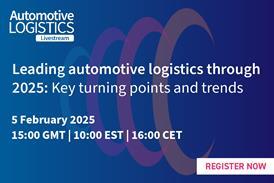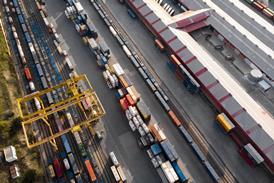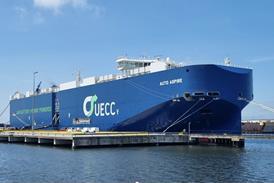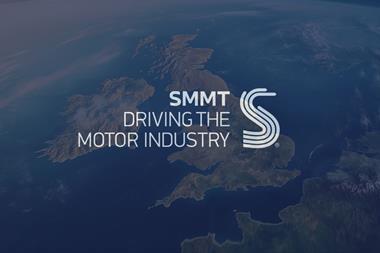Considering the high value of its product, visibility in the finished vehicle supply chain is notoriously poor, but what is the industry doing about it?

The contrast between the two sides of the automotive supply chain could hardly be starker. Upstream, flows are highly disciplined and tightly managed. Parts and assemblies travel on predictable routes and arrive at production lines in sequence to keep vehicles moving steadily towards the factory gate.
Downstream, however, everything becomes a bit fuzzier. To get to their customers, finished vehicles may make multiple steps on different transport modes, with each operated by a different logistics provider. Handovers take place in the complex, potentially chaotic environments of ports and railheads, while final destinations include thousands of small dealerships spread right across the world. There is plenty of potential for damage, confusion and delay across the chain.
On one hand, it is remarkable that all the complex elements of the outbound vehicle supply chain manage to work together as effectively as they do – most customers receive their cars on time, in good condition, and costs are fairly low. On the other hand, it is constantly frustrating for customers, dealers, car companies and other actors in the supply chain that when problems do occur they often emerge only when it is too late to do anything about them.
Benefits of visibility
Technology and service providers broadly agree on the potential benefits of improved traceability for vehicle logistics. Those advantages take three basic forms.
First, there is the benefit of foresight. If a dealer knows exactly what time of day a delivery of vehicles is likely to arrive, he can ensure that staff are available to receive it. If a customer’s eagerly awaited new car is likely to be two days late, it is far better that the dealer can let them know a week in advance.
Second, there is the potential to improve supply chain performance at the micro-level, based on superior information flow. Rather than leaving an expensive truck and driver waiting to load vehicles delayed in a port, for example, an operator may be able to reallocate that asset elsewhere. Similarly, if a shipment is delayed, early warning can help supply chain managers to put countermeasures in place more quickly; sending a rescue vehicle to a stranded truck, for example, or re-routing subsequent shipments to avoid a delay.
Third, there is the opportunity to continually optimise supply chain design and operation using aggregated data. Is one trucking provider consistently failing to meet schedules? Where in the supply chain is most damage occurring? Are some lanes too congested, suggesting a need to invest in assets, infrastructure, or alternative routes?
No standard for visibility
Every part of the supply chain would seem to benefit from greater transparency, yet the industry seems to find it so hard to achieve. Plenty of other supply chains, from the express parcels business to the automotive industry’s own inbound routes, seem to do it much better.
Part of the answer lies in the fragmented nature of the downstream supply chain. While an express parcels company will be able to spread the cost of its tracking systems across thousands of warehouses and delivery vans, a trucking company may be reluctant to carry the burden of hardware training and support for just a small number of vehicles, particularly if it looks like they might have to support a slightly different system for each and every customer.
In Europe, not-for-profit industry group Odette International has set itself the challenge of designing process and data standards for automotive logistics flows. While the industry-funded organisation has historically concentrated more on the inbound chain, it has been turning its attention recently to the challenges of vehicle logistics. Its first foray in this direction was a specification for a human barcode and RFID-readable smart label for vehicles, building on internationally agreed RFID standards.
According to John Canvin, Odette’s managing director, the challenge of data exchange in the finished vehicle supply chain is now firmly on the organisation’s agenda. Its first step is an industry-wide survey, scheduled to be underway around the end of 2013, which will explore the opportunities for standardising processes and improving data exchange.
“At the moment, we know that different manufacturers do things in different ways, and that transportation companies need different communications with each customer,” says Canvin. “Our members are telling us very clearly that this is wasteful and that it is taking too much time and effort to set up, and to maintain, connections in the supply chain.”
"If you have the right standards in place, it should be possible to eliminate paper from the supply chain and, largely, to eliminate manual key entry of data too" - John Canvin, Odette International
Standardisation, he suggests, should cut costs for hauliers and improve information flows for carmakers and dealers, ultimately improving the efficiency of the whole supply chain. “If you have the right standards in place, it should be possible to eliminate paper from the supply chain and, largely, to eliminate manual key entry of data too,” says Canvin, noting that both add unnecessary cost, delay and the potential for error. Early conversations have been promising. “When we speak to the logistics companies, they like the idea, and the vehicle manufacturers think that it could make sense.”
It is too early to be clear about what the proposed standard will look like, or when it will be agreed, but Canvin is cautiously optimistic about progress.
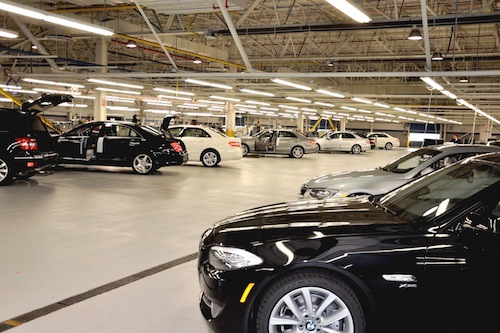
In the absence of a single, agreed standard for vehicle track and trace, a number of private players have stepped in to fill the gap. One of these is ICL, a US-based private company with 35 employees across three US locations, and one in Canada. ICL is dedicated to vehicle tracking services, which cover delivery routes across North America and the tracking of vessels from certain overseas assembly plants into the US. Brian Hook is the company’s vice-president of operations. He says ICL tracks about 32% of new vehicles in the US and 20% of those in Canada for customers including Toyota, Nissan, Porsche, VW, Mazda and Mercedes-Benz.
ICL was founded by automotive industry veterans to fulfil a need identified when its founders were working in finished vehicle logistics for some of the larger Asian carmakers. “It was clear to us that there was a need for better systems to handle things like vehicle tracking, payment and performance audits,” says Hook,“but it was hard to get funding for these systems from internal IT groups.”
Today, ICL collects data from more than 60 logistics companies involved in all stages of the supply chain, from assembly plant to dealer. The company holds and analyses that data on behalf of its customers to provide a range of services including real-time updates on vehicle movements, estimated time of arrival calculations and alerts for transport exceptions.
"It was clear to us that there was a need for better systems to handle things like vehicle tracking, payment and performance audits, but it was hard to get funding for these systems internally" - Brian Hook, ICL
As well as these operational measures, ICL collects a significant amount of performance data, including measures of the quality and timeliness of data received, delivery performance and overall supply chain consistency. This kind of data is essential, says Hook, since “if you do not ‘own’ the supply chain, without consistency it is very difficult to predict the behaviour of the transportation process.”
Customers making effective use of this data have been able to drive significant improvements in their finished vehicle logistics operations, says Hook. “One major North American OEM conducted a study that identified over $25m in annual savings due to reduced flooring costs,” he notes.
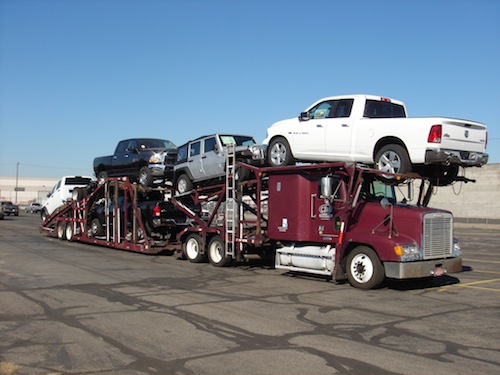
Other companies are developing offerings to fill particular gaps in vehicle information flows. Car Delivery Network (CDN), for example, a specialist technology company with offices in the UK and the US, has focused its attention on the last mile in the delivery process. Mike Thorby, the company’s chief technology officer, explains what it offers: “When we entered the automotive space around five years ago, we couldn’t believe that there was such an information black hole in the last mile. We saw a really fragmented environment with hundreds of carriers with a heavy reliance on paper to capture information. The result was that valuable information was taking a long time to move through the supply chain, if it gets there at all.”
CDN recognised that no single actor in the supply chain was likely to want to carry the cost of an improved tracking system, so it set out to build an offering that could work on a service basis, with shippers paying a small charge – ten cents per vehicle – for ‘ePOD’ (electronically recorded points of delivery) track-and-trace.
Today, the company offers three products that use mobile technology that carry out ePOD; optimise tracking data; and allow companies to advertise extra loads to carriers.
Chrysler is scheduled to go live with the ePOD system, called vinDELIVER, next year.
While CDN aims to eliminate much of the hard work involved in building a track-and-trace system, integrating with any network requires some investment. “We’ve used modern standards and programming techniques to make integrating with our systems as straightforward as possible, but it can still be a challenge for some players in the supply chain,” says Mike Thorby, particularly for carriers, which don’t necessarily have full control of their own systems. “They may need to bring in external skills to do the integration work. Some carriers can do the necessary integration in two days, others have taken two months.”
Ubiquitous solutions
As well as a lack of standards and IT capabilities, the last mile of the finished vehicle supply chain also faces a lack of infrastructure, as truck operators and dealers may not have the equipment to scan barcodes, let alone RFID tags. However, more companies are making use of increasingly ubiquitous web and mobile phone technologies to overcome some of these limitations. One such is US-based 3PL MetroGistics, which manages the transport of both new and pre-owned vehicles across the US.
Managing partner Scott Naz explains the company’s approach. “We rely on technology solutions to link our carrier partners and give superior service to our customers,” he says. “A lot of our carriers don’t have sophisticated infrastructure like web services or EDI, so we provide the infrastructure for them. We may ask them to log into our system, or we may push them the information by e-mail so all they have to do is check some boxes to give us the status update we need. We also provide an interface for customers and dealers, in the form of an app, where they can just enter the VIN of the car they are interested in to find out where it is in the network.”
Naz says carriers love the system because it minimises the effort required to submit data.
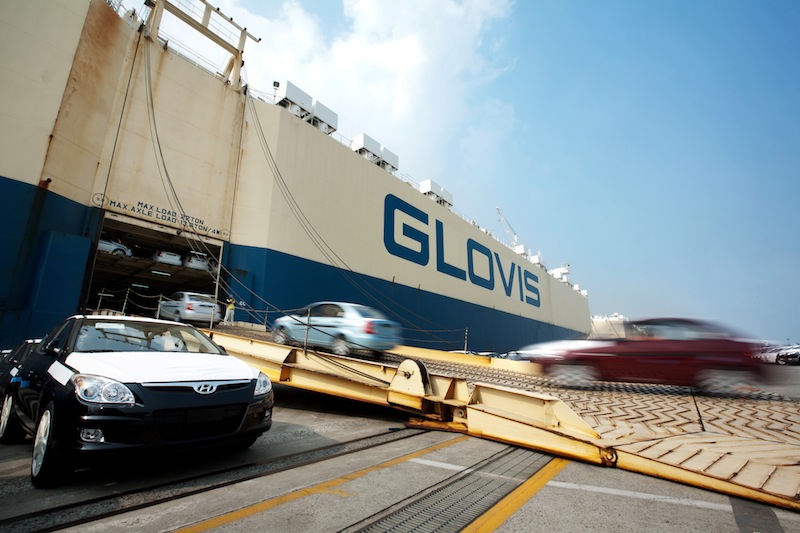
Clearly, there are certain security and privacy concerns that need to be managed for such an approach to work at scale, but Naz reports considerable enthusiasm for the concept among its carrier partners and says his company plans to roll out a test system in 2014.
Some observers point out that technologies like GPS don’t provide all the answers to the vehicle-tracking problem.
“GPS might help if a vehicle is actually lost, but often it won’t give you the information you need in order to take action,” says ICL’s Brian Hook. “For example, a GPS system might show you that a vehicle is located in a rail yard, but you can’t tell if it is ready to load onto a truck or not. That’s why it is more important to hook the different business partners together to provide the context of the vehicle’s situation.”
Differences in focus
Despite so many examples of technology being applied successfully, the problem of vehicle track-and-trace is far from solved. At ICL, Brian Hook notes that differences in the way supply chains are managed can make a significant difference to the quality of the data collected, and hence its usefulness. “While everyone is collecting more or less the same data, some of our customers place more emphasis on the quality and timeliness of the data their suppliers provide,” he notes. “If you look at the data that comes to us, even from the same supplier, you find that they provide better data for the customers that prioritise that.”
There are also still some important supply chain blackspots, notes Hook. “When a vehicle is on a railcar, the quality of the tracking data is good; we get frequent updates and pretty much always know where the vehicle is. However, once it arrives at the offloading ramp, the rail companies can’t generally provide us with a plan for the offload process. A car might come off in two hours, or it might take 40 hours.”
"When we entered the industry five years ago, we couldn’t believe that there was such an information black hole in the last mile. We saw a really fragmented environment with hundreds of carriers with a heavy reliance on paper to capture information" - Mike Thorby, Car Delivery Network
In the long term, says Brian Hook, the challenge and the opportunities will be less around the collection and communication of data – which will become “a commodity”, he says – and more about companies having better tools to analyse and make decisions based on that data. As elsewhere, improvements here will come from a combination of technical and business changes. The technological opportunity includes the use of more advanced data mining, visualisation, analysis and optimisation tools.
Optimising information
One player with an offering built on the use of advanced optimisation technology is German IT company Inform, with its finished vehicle logistics product SyncroTESS. Matthias Berlit, the company’s vice-president of manufacturing logistics, explains what it does: “SyncroTESS CPS, what we call a 'central planning and tracking system', allows an OEM, a 3PL or a 4PL with a network to track their cars through that network.”
The Inform system collects information on vehicle position and status from the various logistics players using a variety of standard interfaces and messaging systems, including a smartphone app for truck drivers or dealers that can be used as an ePOD record to log arrival time and damage.

Critically, the system is continually updating its planning algorithms based on the real performance data it receives from the network, so if one lane is underperforming because of congestion, future shipments can be moved by an alternative route. Customers can also decide exactly how they want to optimise their network – for cost, speed or CO2 emissions, or a balanced combination of all three.
Inform also offers a compound management system, which helps logistics providers to optimise storage and movement within their compounds. “This system tracks the status and position of vehicles in the compound, but it also allows owners to implement concepts like ‘fast track’ to accelerate the movement of certain cars if they need to prioritise them.”
Even with the most advanced technologies available, Berlit notes that timely data collection is absolutely essential for companies to optimise the management of their networks. “The biggest benefit of direct tracking is earlier or better discussions. If I have to wait to get the data, I have fewer options than if I had the data immediately.”
Share to gain
One key future business opportunity, says ICL’s Brian Hook, could come from a greater willingness to share supply chain performance data between companies. “At the moment, each carmaker only has a view of a very thin slice of the total supply chain, while the performance of many parts of that supply chain is actually influenced by everyone.”
Clearly, with a third of vehicle movements already in its systems, ICL sees an opportunity here. “We feel we can bring the industry much closer to this goal using our services, as well as a new benchmarking service we are working on. We would like to bring together all of the vehicle tracking events for all OEMs in North America so that we can paint a more complete picture of the current state of the supply chain.
“OEMs will then be able to make more informed decisions regarding the transportation of the vehicle. The industry as a whole will also become more efficient in terms of utilising the assets available for vehicle transportation.”
Hook accepts, however, that any such effort will rely on the industry being willing to put mutual suspicion aside and to invest in the opportunity. Whether the major players have sufficient appetite to do that, remains to be seen.


